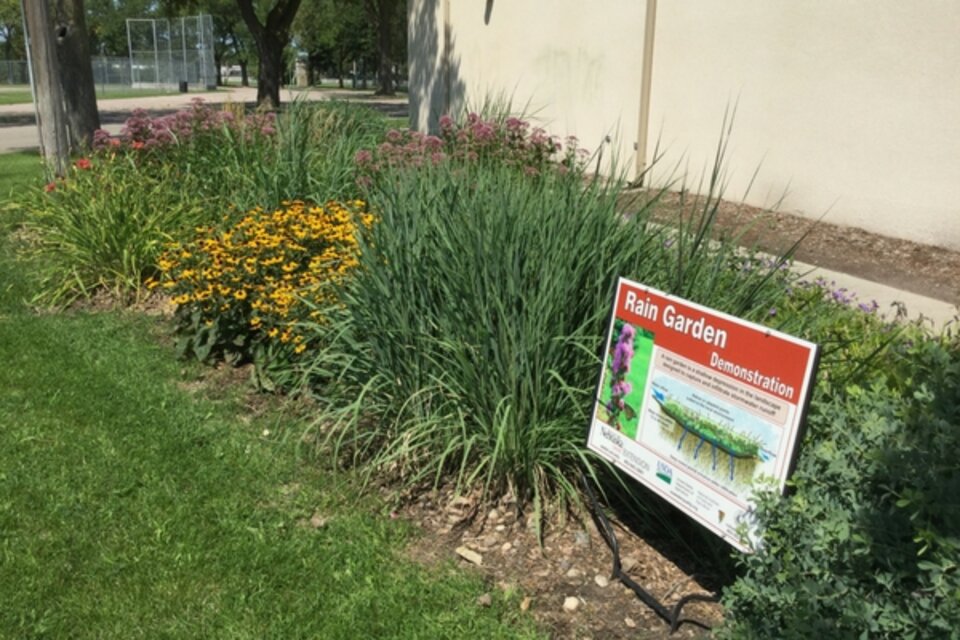Gardens for Water and Pollinators

When planning gardens, people may think about pollinators and select plants to benefit them. Another trend is using rain gardens to catch and hold rainwater. Water and pollinator conservation are two goals achieved with rain gardens.
Rain gardens reduce irrigation needs and can decrease the amount of rainwater running off of a property and carrying pollutants to surface water. Rainwater is a valuable resource. Consider collecting some of it with a rain garden that is filled with plants to benefit pollinators.
To the average person, most rain gardens look similar to regular flower gardens. What makes them a rain garden is they are located and designed where they will collect and hold rainwater, typically from a roof downspout or sloped area of a lawn.
Rain gardens are shallow depressions with low berms on three sides to prevent rainwater flowing out. They need to be located not only where rainwater can be directed into them, but where soil is well drained.
A correctly installed rain garden will hold water for about 24 hours after rainfall, 48 hours at the most. If a rain garden is not designed and installed correctly, and water does not drain away in 48 hours or less, there would be a risk of losing plants and possibly breeding mosquitoes.
Rain gardens conserve water because rainfall is used in place of irrigation. Instead of rainwater from roofs or slopes being directed into streets and storm drains, more flows into the garden to soak into soil.
By selecting the right plants, and focusing on good root establishment the first season, rain gardens should not need irrigation thereafter except during drought. To learn more about rain gardens, go to www.extensionpubs.unl.edu and search for stormwater or rain gardens.
With loss of habitat, pollinators benefit from residential gardens for nectar, pollen and larval food sources. There are many perennials, ornamental grasses and shrubs to plant in rain gardens that will benefit pollinators.
With rain gardens, there are different zones to select plants for. The bottom of a rain garden can remain wet and plants tolerant of inundation for 24 to 48 hours and wet soils need to be used. Good examples are Carex, Chelone or turtlehead, swamp milkweed, Joe-pye weed, Helenium, and switchgrass.
Most plants can be used on the sides of a rain garden. For the tops of the low berms, drought tolerant plants are best since berms shed water. Good plants for the tops of rain gardens include hardy geranium, black-eyed Susan, Coreopsis, low growing asters, blanket flower, and butterfly milkweed.
As you decide what to plant, think about flowering succession. Ideally, something should be blooming from early spring to late fall for pollinators. This includes trees and shrubs as well as perennials, sedges and grasses.
If there is a time when you have less blooming in your yard, look for plants to fill the gap for pollinators. Mid-May through June can be a time with few blooms. Perennials that bloom at this time include Baptisia, columbine, Penstemon, prairie smoke, Salvia, baby’s breath, blue flax, and prairie phlox. These would do well on the sides or tops of rain gardens.
This article was reviewed by Nicole Stoner